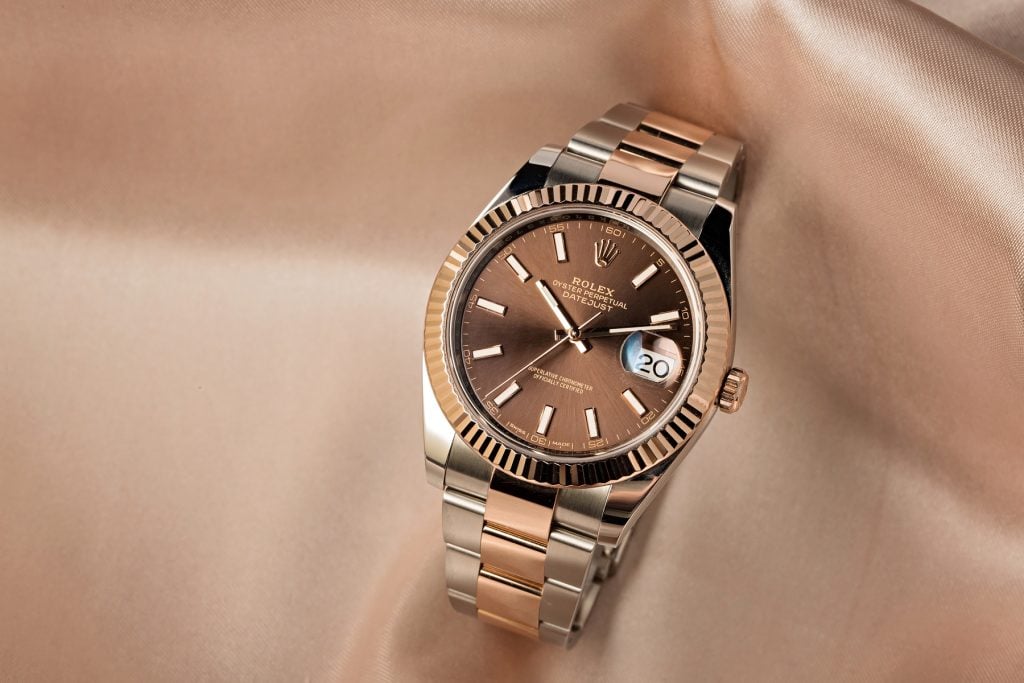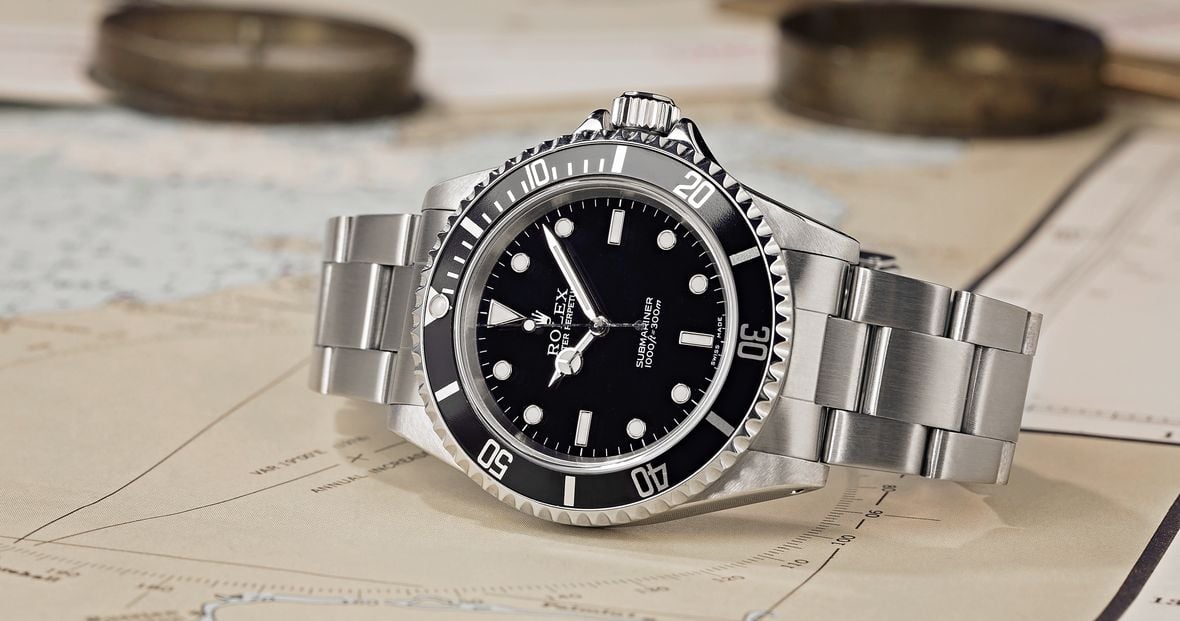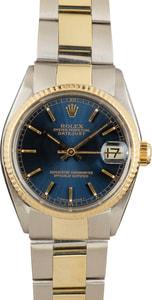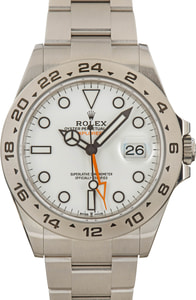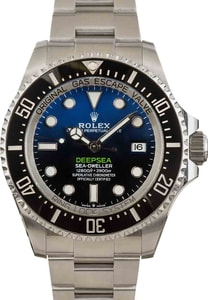Comparing the Rolex Datejust (now called the Datejust 36) and the Datejust II is a lot like comparing Pepsi and Coke. Pepsi and Coke are both colas. Their flavors are similar to each other. One statistically appeals to an older, more conservative crowd, the other to a more youthful, liberal group. One’s been around forever while the other is a slightly young upstart by comparison.
And yet, the two are distinctive. And so it is with the two Datejusts. (We’ll begin with the Datejust II, followed by the current production Datejust 41).
Click here for our Ultimate Buying Guide on the Rolex Datejust.
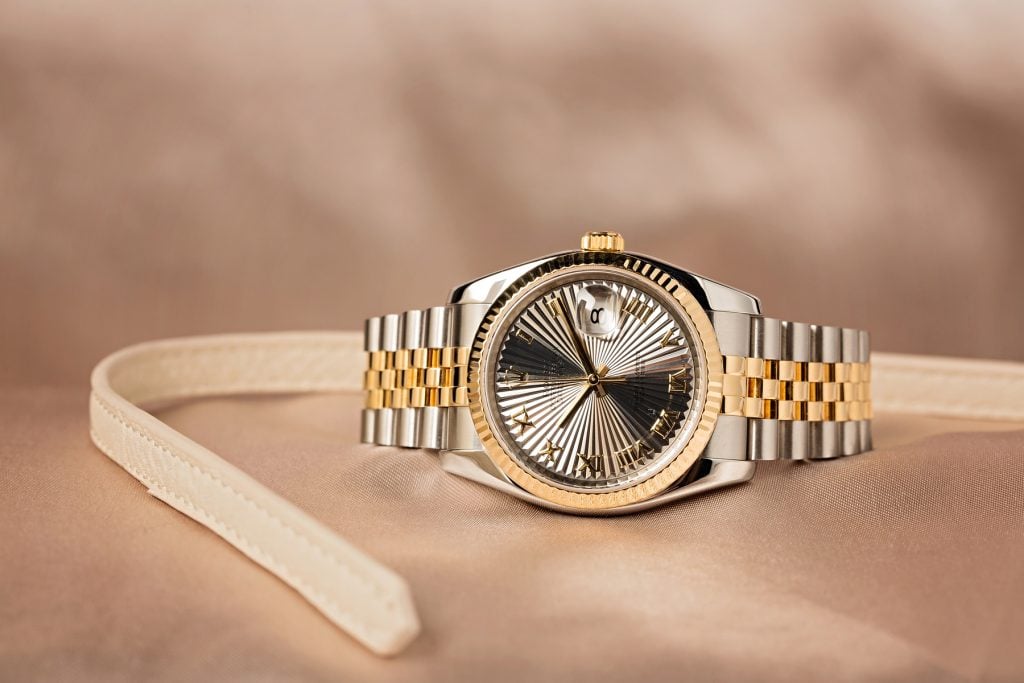
Datejust I vs. Datejust II
First the similarities. At first glance on a wrist from across a room, one could be mistaken for the other. However, there is a 5mm difference.
Keeping the design harmonious with that 14% size difference causes a change in proportions between the two. The Datejust’s overall design of course, has been nearly static for well over half a century (it was introduced in 1945). When Rolex’s designers decided to extrapolate the design out to 41mm for the Datejust II in 2009, the most noticeable change was the wider bezel.
Rolex designers kept the 20mm bracelet width too, so the lugs are slightly thicker on the Datejust II. These thicker lugs aren’t as noticeable as the bezel, but they still contribute to the overall difference in proportions between the two models.
Both watches are available with either a fluted bezel or a smooth bezel. Beyond that, there’s an incredible assortment of features for each. There are countless combinations of metals, dial designs and finishes, bezels, and bracelets.
The Datejust 36 is available with either the venerable Jubilee bracelet, which was developed for the original launch of the Datejust in 1945 or the Oyster bracelet with an Oysterclasp and the brand’s exclusive Easylink comfort extension link. Straps are also an option with certain feature combinations. By contrast, the Datejust II is only offered with the Oyster bracelet and Oysterclasp, no matter which other options are chosen.
The Datejust is available in 904L steel, yellow gold, or Everose gold (Rolex’s term for its proprietary rose gold). It also features two-tone (steel and white, yellow, or Everose gold) combinations, while the Datejust II is a stainless steel or steel and gold two-tone proposition.
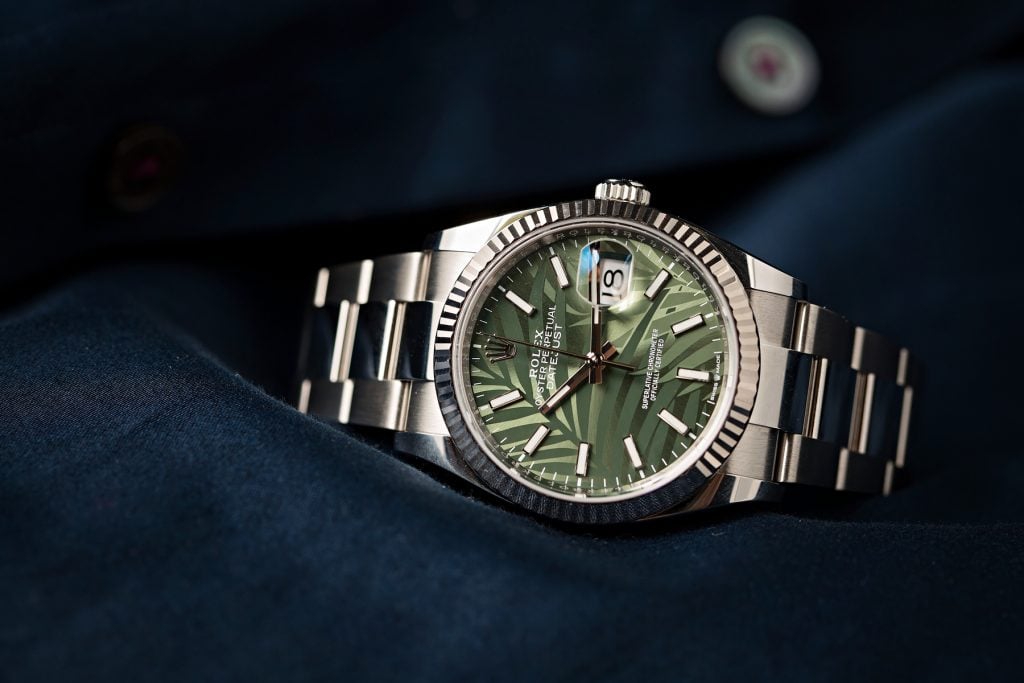
Movement Differences: Datejust I vs. Datejust II
The differences between the two models aren’t only skin deep. The modern Datejust 36 watches sport a caliber 3135 or 3235 under the dial, depending on the year it was produced, while the Datejust II uses the caliber 3136. Each are COSC certified chronometer movements featuring Rolex’s Parachrom hairspring, but the newer movements, calibers 3136 and 3235, also have high-performance Paraflex shock absorbers. Rolex claims these shock absorbers offer greater resistance to shock and other extreme conditions. Calibers 3135 and 3136 feature 48-hour power reserves, while caliber 3235 boasts a power reserve of approximately 70 hours.
These calibers are solid movements carrying Rolex’s newly redefined Superlative Chronometer designation. The new definition means both movements run -2/+2 seconds per day after the movement has been mounted in the watch case. That’s better than twice as precise as the COSC certification required -4/+6 seconds per day.
If you’re a bit confused after reading through all that, not to worry. To see all the permutations of the Datejust II and the Datejust 36, simply go to the Datejust page on the Rolex website and you’ll be able to see the differences. Additionally, since all of the watches listed for sale on our site have their corresponding years, it makes it easy to tell when the different Datejust watches were made.
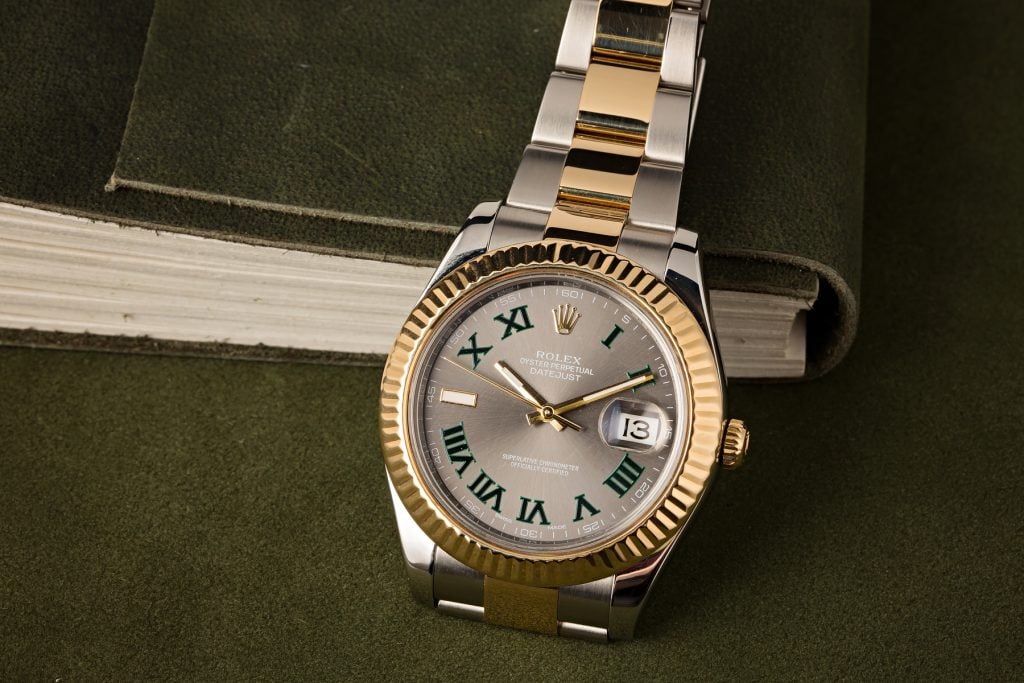
The Datejust II vs. Datejust 41
Now, let’s turn our attention to the other 41mm Datejust. The Datejust II filled a void in the Rolex catalog for a larger, more contemporary edition of the famous Datejust luxury watch. However, there was still so much room for improvement – enter the Datejust 41. It was released to the market in 2016, bringing with it several design tweaks.
Side-by-side, the Datejust 41 seems more polished and buttoned-up than the Datejust II. Although it keeps the same 41mm diameter, the somewhat chunky lugs on its predecessor have been replaced with slimmer, more refined lugs. Additionally, the bezel has been thinned out, allowing the dial to take on a larger appearance and adding to the overall effortless design of the Datejust 41 that more closely mirrors the aesthetic of the traditional Datejust 36. As far as contemporary dress watches are considered, the Datejust 41 gets even the smallest details right.
Looking at the design options, the Datejust 41 offers a bit more. The Datejust II was only produced on the three-link Oyster bracelet, while the Datejust 41 gives you the option of either the Oyster or the dressier 5-piece link Jubilee bracelet, just like the Datejust 36. It also features more metal finishes, including standard Oystersteel and all three Rolesor finishes pairing steel with rose, yellow, or white gold. As of the writing of this article, we still don’t have a full gold Datejust 41 model.
Dial options vary from the polarizing “Wimbledon” Roman numeral dial to classic hues, such as champagne or blue adorned with baton hour markers filled with Rolex’s spectacular Chromalight lume.
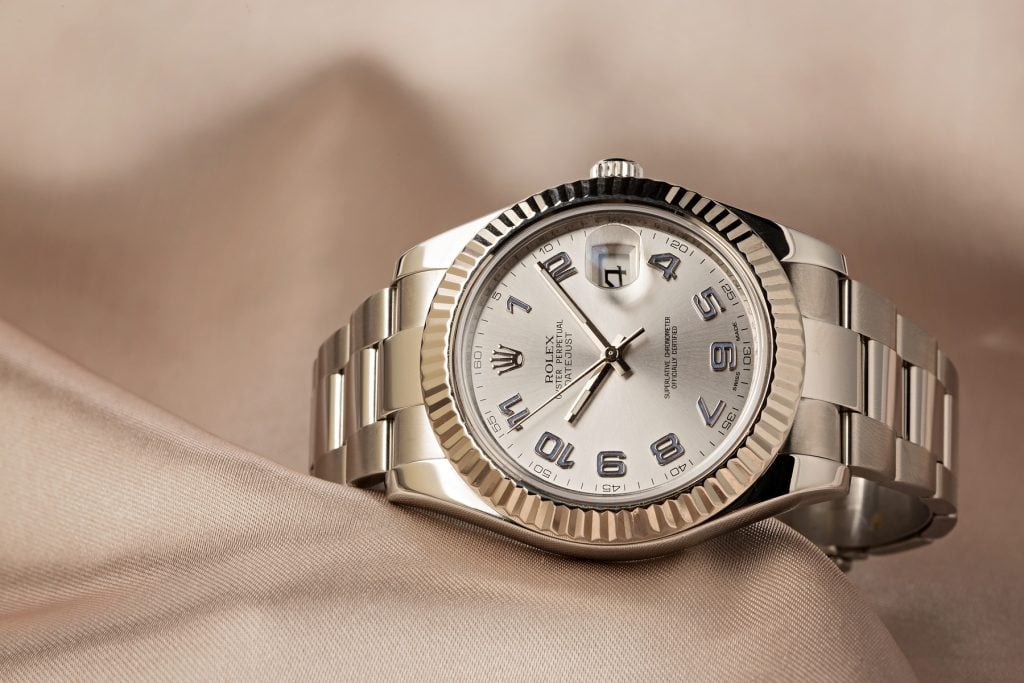
Movement Differences: Datejust II vs. Datejust 41
Looking inside the case, the movement also received a significant upgrade in the form of the latest and greatest Rolex movement: caliber 3235. This movement replaces the long-reigning caliber 3135 and can be found inside both the Datejust 36 and the Datejust 41. However, the Datejust II was only ever powered by the caliber 3136.
This movement has a longer power reserve of up to 70 hours and a more efficient skeletonized Chronergy escapement. Over 90% of the components inside cal. 3235 are new, resulting in a movement that offers better resistance to electromagnetic fields, a longer power reserve, and better overall efficiency of up to 15%.
The Datejust, in its countless variations, is Rolex’s most successful model of all time. It came to market in 1945 and shows no signs of slowing down anytime soon. Which model do you prefer? The classic Datejust 36? Or the 41mm Datejust?
